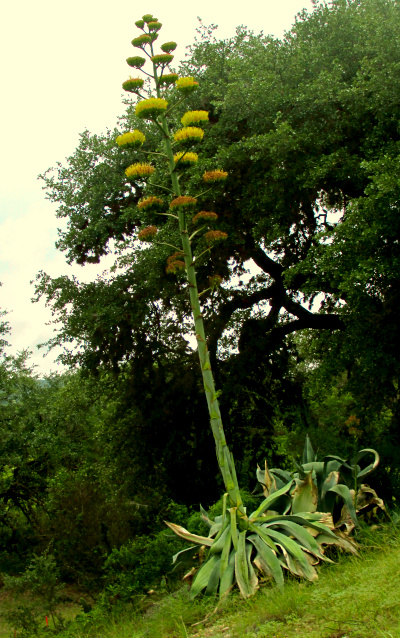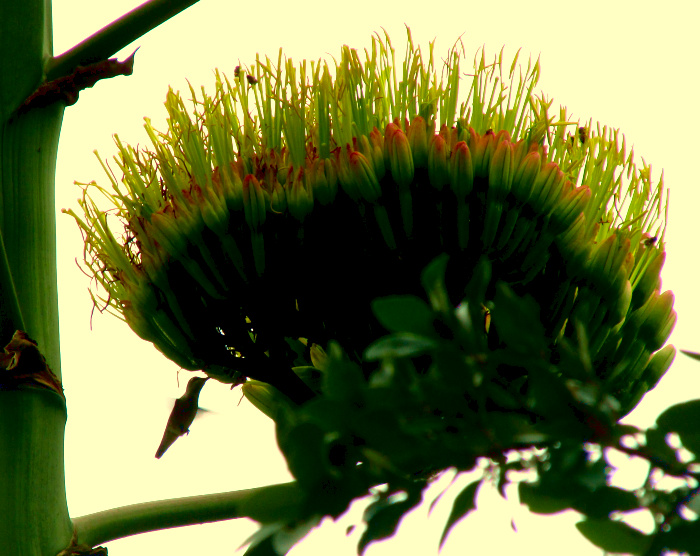Excerpts from Jim Conrad's
Naturalist Newsletter

issued July 11, 2021 from the Dry Frio River Valley in northern Uvalde County, southwestern Texas, USA
GIANT AGAVE/ CENTURY PLANT FLOWERING Beside the little gravel road crossing the Dry Frio and ascending the bank to the community, a giant agave, sometimes called the Century Plant, AGAVE ATROVIRENS, has been planted and one of several is flowering, as shown at the right. Earlier this year during a historically cold snap last January, reaching 7°F (-14°C), some smaller plants in the group died, and this larger one's lower blades were severely damaged, so there was a question as to whether it would survive. In this area giant agaves are strictly grown as an ornamental.
Below, you can see that local pollinators are much attracted to the flowers:

UPDATE FROM MEXICO: The following year I'm back in upland central Mexico where several agave species are found, and I realized that the Century Plant/Giant Agave matter is more complex than I'd known. At least three giant agaves often grown for various uses, including ornamental, are recognized: Agave americana, A. atrovirens, and A. salmiana.
The agave pictured above is neither Agave salmiana nor Agave americana because, according to the Flora del Valle de Tehuacán-Cuicatlán, the flowers of those giant species are all yellow, not red-tipped as shown in the last photo. Another reason it's not Agave salmiana is that in that species the inflorescences are more fat-egg-shaped than the slender, elongated one in the picture. Nor are its leaves as broad as those of the two species.
That leaves us with Agave atrovirens, known as the largest of all agavies. Some authorities consider Agave salmiana a mere variety of Agave atrovirens, but at this time the consensus mostly seems to be to keep them apart. Still, this shows the close relationship between Agave atrovirens and Agave salmiana. Sometimes Agave atrovirens is called Pulque Agave, because it's often used for the brewing of Mexico's traditional alcoholic drink known as pulque, but all the large agaves are used for that purpose.